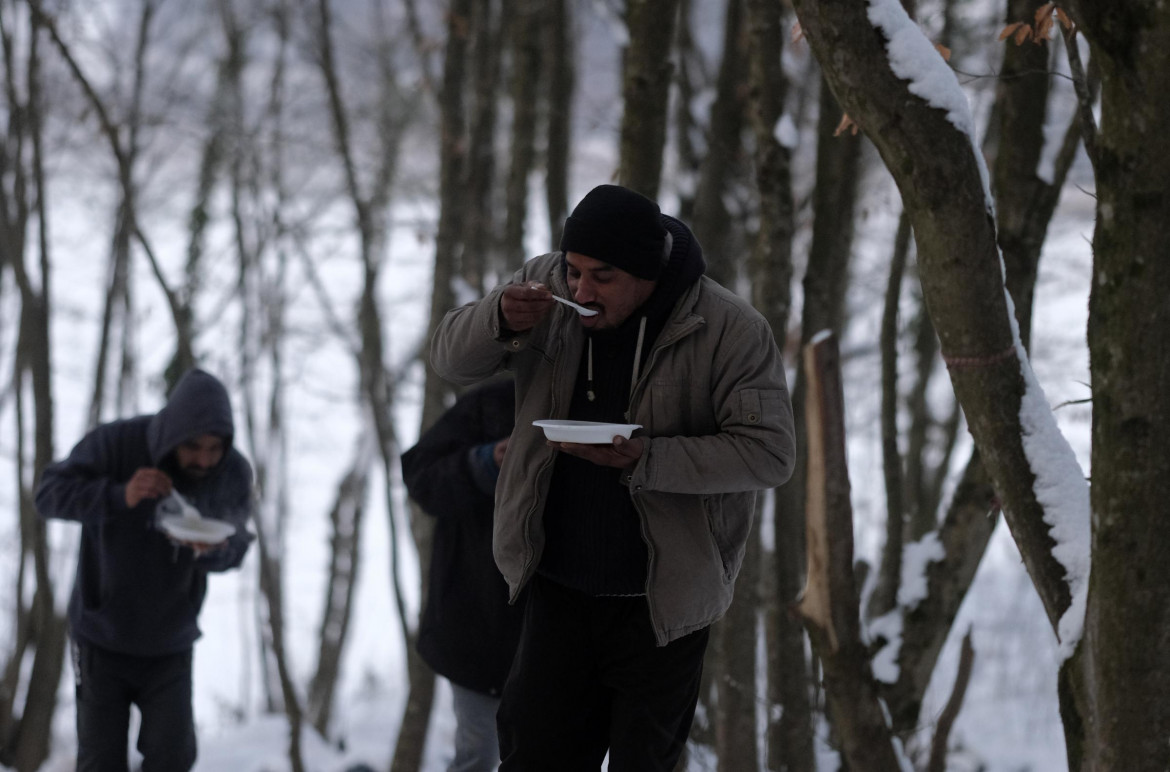Report
Refugees’ human rights are buried under the snow of the Balkans
Since the explosion of the Syrian crisis opened a breach through the Balkans, violence, denial of rights and abandonment have taken place along these routes: this is what the policy of rejections implemented by Europe means.

Endless queues of people dressed as thin as you can imagine, sometimes in flip-flops, queuing in the snow for a daily meal. Improvised huts in the woods or among the burnt remains of the camp where people try to warm themselves around a bonfire. Non-potable water taken from sewage pipes.
The shocking images arriving from Bihac, Bosnia, after the fire in the Lipa refugee camp, point to a drama that has been unfolding for some time in the heart of Europe. For some years, since the explosion of the Syrian crisis opened a breach through the Balkans, violence, denial of rights and abandonment have taken place along these routes: this is what the policy of rejections implemented by Europe means.
The network RiVolti ai Balcani, constituted in 2019 by 34 associations and realities committed to the defense of people’s rights and the fundamental principles on which the Italian Constitution and European and international standards are based, has long denounced the living conditions of migrants and refugees along the Balkan route.
Saturday, from the ship Mare Jonio, in collaboration with Mediterranea Saving Humans, it presented the second edition of the report “La rotta balcanica. I migranti senza diritti nel cuore dell’Europa” (“The Balkan Route: Migrants without rights in the heart of Europe”).
The first edition had been presented in Milan on June 27, 2020, with updated data on the violations taking place along the migratory routes of the Balkan Peninsula—from Greece to Slovenia, through Bosnia and Herzegovina—since the agreement between the European Union and Turkey in March 2016, by which the EU has de facto delegated the control of part of its external borders to Ankara.
This second report focuses on the border that the fire at the Lipa camp put in the spotlight: the Croat-Bosnian border. Since 2018, the region has become the bottleneck of the Balkan route, a transit route which has changed in recent years with the various closures, such as that of Hungary, since people have to move according to the possible paths.
Thus, Bosnia, a conflict-torn region, whose citizens had given support and aid to people in transit when the migrations began, became the catchment area for the mechanism of chain rejections that is taking place at the European borders: in Croatia, in Slovenia, in Italy. And it has imploded, crushed by the tug-of-war between European, governmental and local authorities. The catastrophe of the 1,500 people without shelter was predictable, says Silvia Maraone (who worked for two years in Bihac for Ipsia, an NGO part of ACLI which has been working in the Balkans since 1997).
It is disturbing data showing generalized violence, according to Gianfranco Schiavone of the Association of Legal Studies on Immigration (ASGI): rejections are illegal because they prevent access to the mechanisms contained in European policies that provide for protection, such as international protection. According to the Danish Refugee Council, since March 2019 alone, 21,000 people have been rejected from Croatia to Bosnia, a number that excludes the possibility that this happened due to isolated and local actions, but instead speaks of a planned operation. In addition—again according to the report—60-70% of the rejected persons were subjected to violence.
Slovenia has participated in this mechanism, with 9,000 rejections that were called “readmissions.”
“The problem is that Europe,” continues Schiavone, “has made a political choice that is making it sink into an abyss of violence.” What we see now in Bosnia, like last year in Greece, is the policy of rejections that is the heart of the humanitarian crisis because it creates these bottlenecks.
Italy is also playing its part in the chain of illegal rejections. During the year 2020 alone, it has rejected 1,300 people; this took place without any formal measures—and without notifications, no appeal can be made. It is a procedure that has been implemented also with asylum seekers and is publicly admitted: a few days ago in a parliamentary hearing, Interior Minister Lamorgese acknowledged that readmission procedures of asylum seekers are illegal.
Originally published at https://ilmanifesto.it/profughi-diritti-umani-respinti-sotto-la-neve-dei-balcani/ on 2021-01-17
